With a Grain of History
Plimoth Patuxet's Grist Mill is proud to be part of a growing movement across the country and around the world to localize grain production and rebuild regional grain economies. While guests visit the Grist Mill and its living history exhibit, they enjoy watching Plimoth Patuxet’s millers fulfill actual orders for sampe (grits), cornmeal, flour, and other grains.
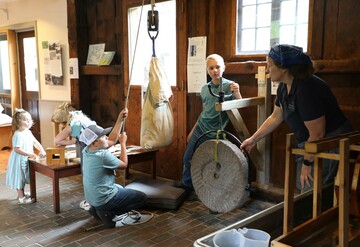
Plimoth Patuxet is more than a Museum.
The Plimoth Grist Mill is our reproduction of the Plymouth colonists’ original 1636 grain mill on Town Brook. Today, with its 200-year-old millstones grinding corn, the Mill is a place to explore the ecology of the Brook and the history of powered mills in this region throughout the centuries. It is also a purveyor of organic stoneground cornmeal and grains. We invite you to visit the Mill to experience and learn about this historic industry that is still making an impact today.
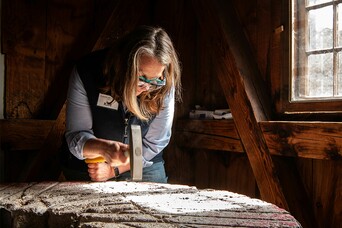
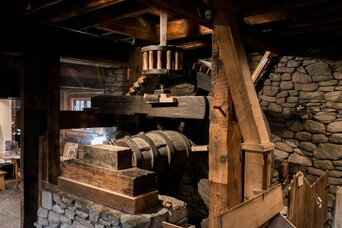
The Mill is proud to be part of a growing movement across the country and around the world to localize grain production and rebuild regional grain economies. While guests visit the Grist Mill and its living history exhibit, they enjoy watching Plimoth Patuxet’s millers fulfill actual orders for sampe (grits), cornmeal, flour, and other grains. At the helm of the Grist Mill, is Plimoth Patuxet’s dedicated team.

Meet Guest Experience Manager and Miller, Kim VanWormer.
Kim is a celebrated member of Plimoth Patuxet's team. This past December, she was the recipient of the New England Museum Association's 2023 Excellence Award that recognizes a museum professional's extraordinary effort and commitment to the New England Museum community.
At the Mill, Kim is the leading force behind the interpretive program that works to blend the history, ecology, science and technology of the Mill to create an eye-opening interactive experience for guests from all over the world. She is also a Miller in her own right, working with farmers and chefs to grow the program and help revitalize the grain economy by producing locally grown, stone ground grains.
Kim’s Favorites to Enjoy in Your Kitchen!
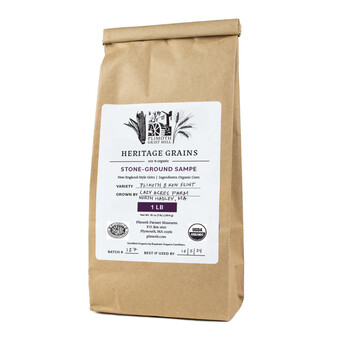
8 Row Flint Sampe (grits)
“This corn is just an outstanding variety. They’re incredibly delicious and they have the little flecks of color in them from the multi-colored corn kernels. I love to make cheesy grits with them.”
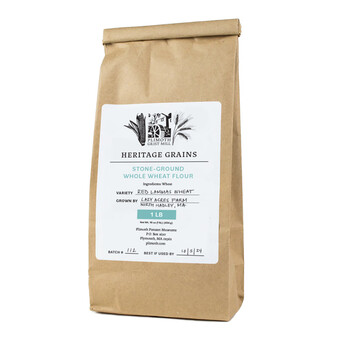
Red Lammas Whole Wheat Flour
“A really flavorful heritage grain. We keep the bran in, so it’s full of great flavor and nutrition. I’ll sometimes mix some of this flour with an all purpose flour for baked goods. It also makes a delicious whole wheat cracker.”
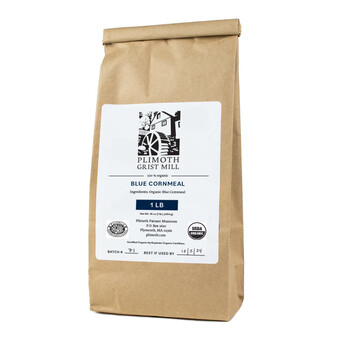
Blue Cornmeal
“Blue corn used to be really common in New England - showing up in the primary sources in the writing of the period often. You can make some awesome blueberry pancakes with this cornmeal. The pancakes themselves are blue, add blueberries, then top it all off with blueberry syrup so it’s super blue!”
There are many ways to sample the grains—and they may also be shipped anywhere in the country.
Local restaurants in Plymouth and throughout coastal Massachusetts incorporate the grains into their dishes, and the Museum is proud to be a part of their culinary offerings. Below is a current list of restaurants and bakers who have incorporated Plimoth Grist Mill products into their menus. Plimoth Patuxet is ever grateful for their support, and hopes you will consider being their patron and sampling the many ways that the Plimoth Grist Mill is adding historic practices to today’s locally grown and produced food market.

Plymouth Restaurants & Bakers
Artisan Pig
Bramhall's Country Store
Cork and Table
Duke's Beach House
Food Court
Jenny's Bread
Leena's Kitchen
Log Cabin Bakers
Mallebar Brasserie
Plentiful Cafe, Plimoth Patuxet Museums
Rye Tavern
The Jetty
Salt
SuCasa
The Tasty
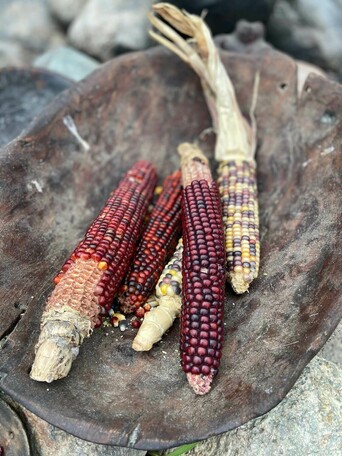
Cape Cod Restaurants
Fig Tree Cafe, Marstons Mills
Hyannis Yacht Club, Hyannis
O'Neill's Kitchen, Mashpee
Oyster Harbors Club, Osterville
Sunbird Provisions, Orleans
Blue Oar, Cohassett
Branch Line, Watertown
Clover Food Lab, Boston
Dotty's Kitchen and Raw Bar, Quincy
Trillium Brewing, Boston and Canton